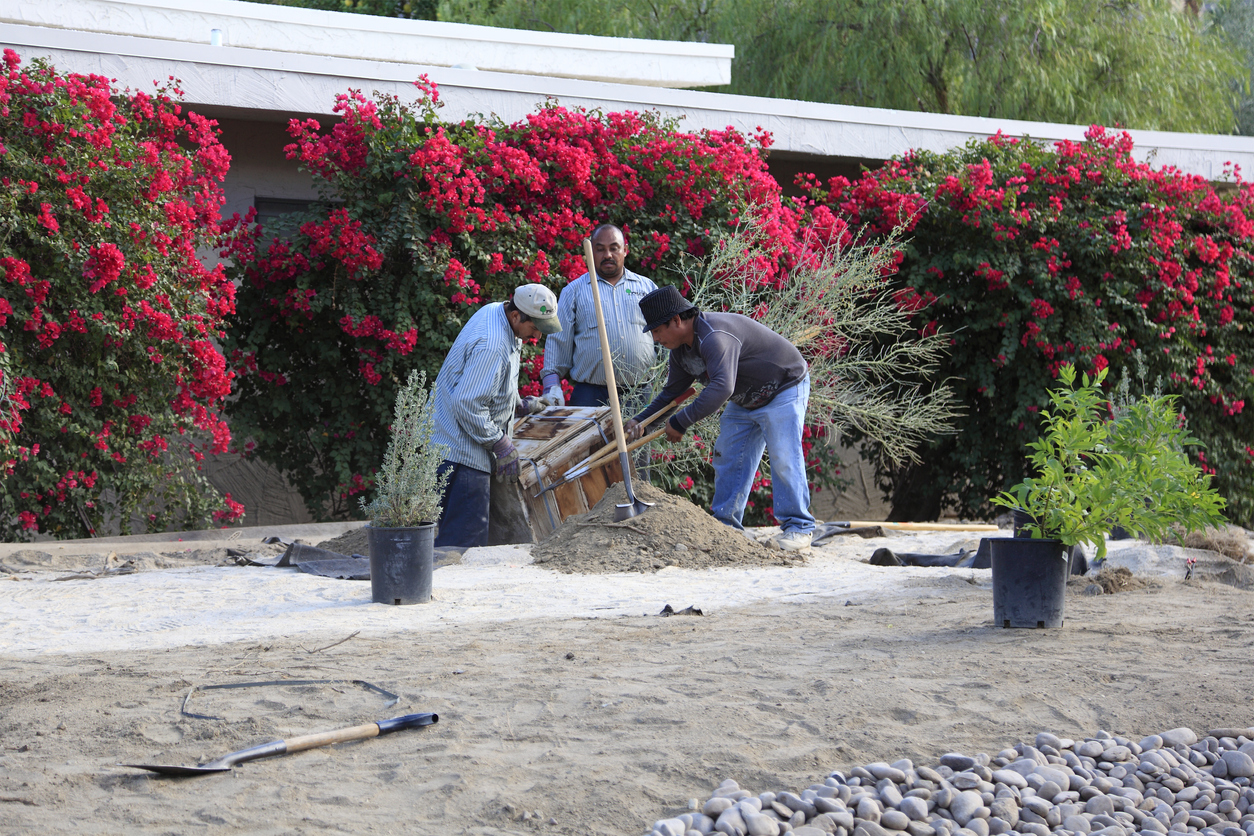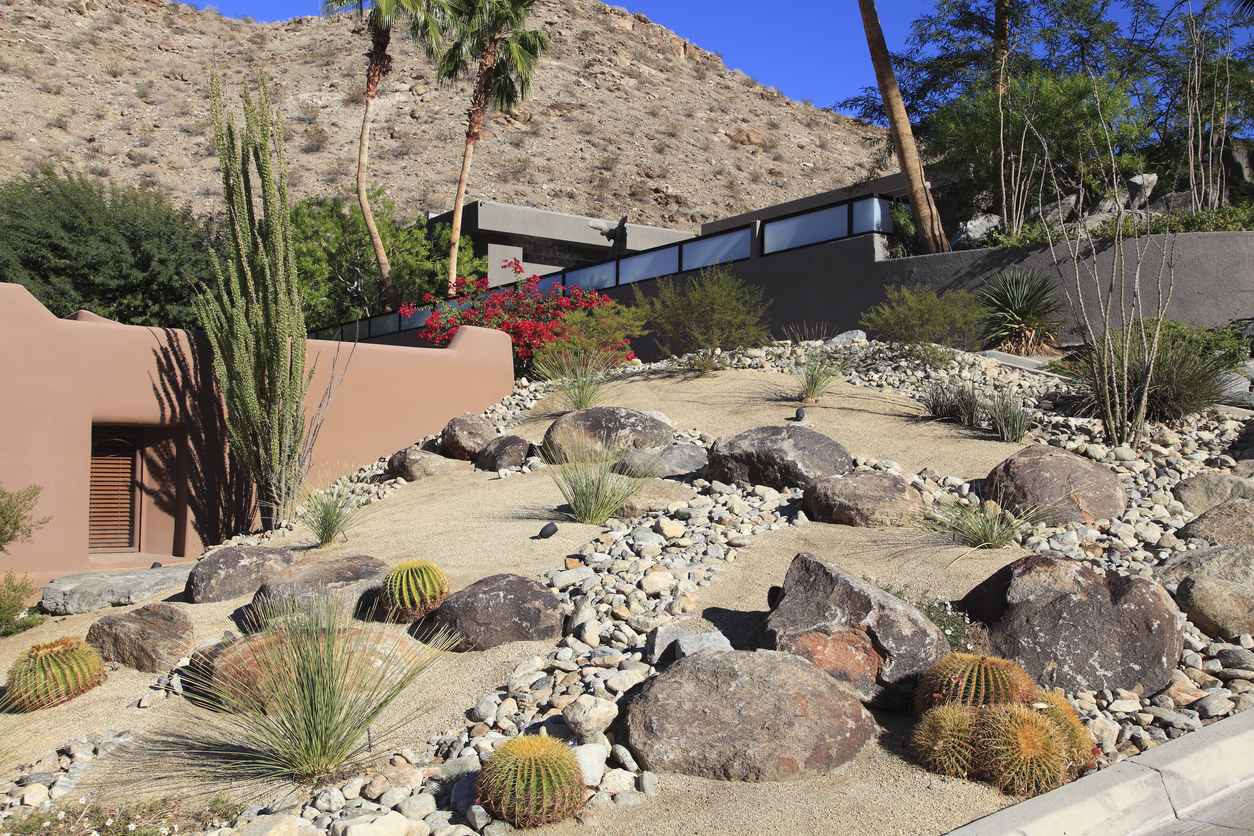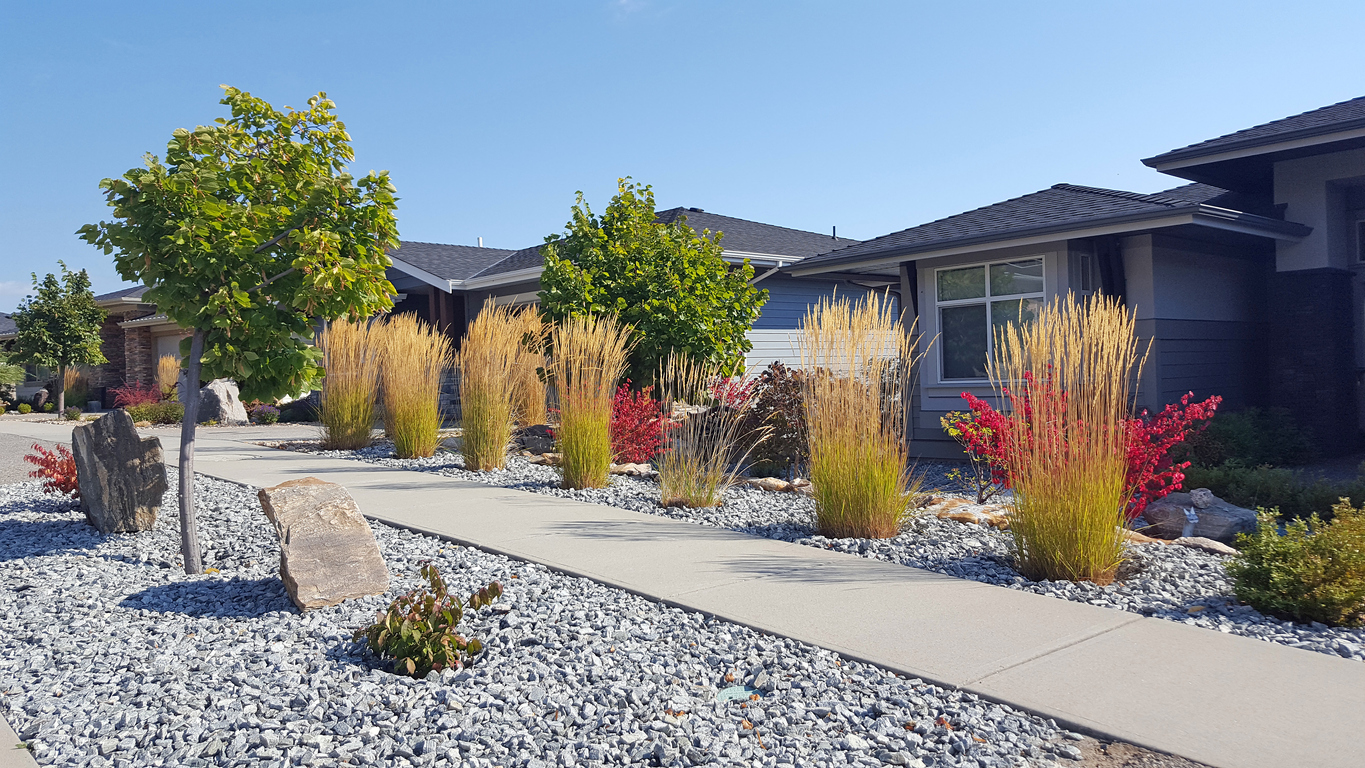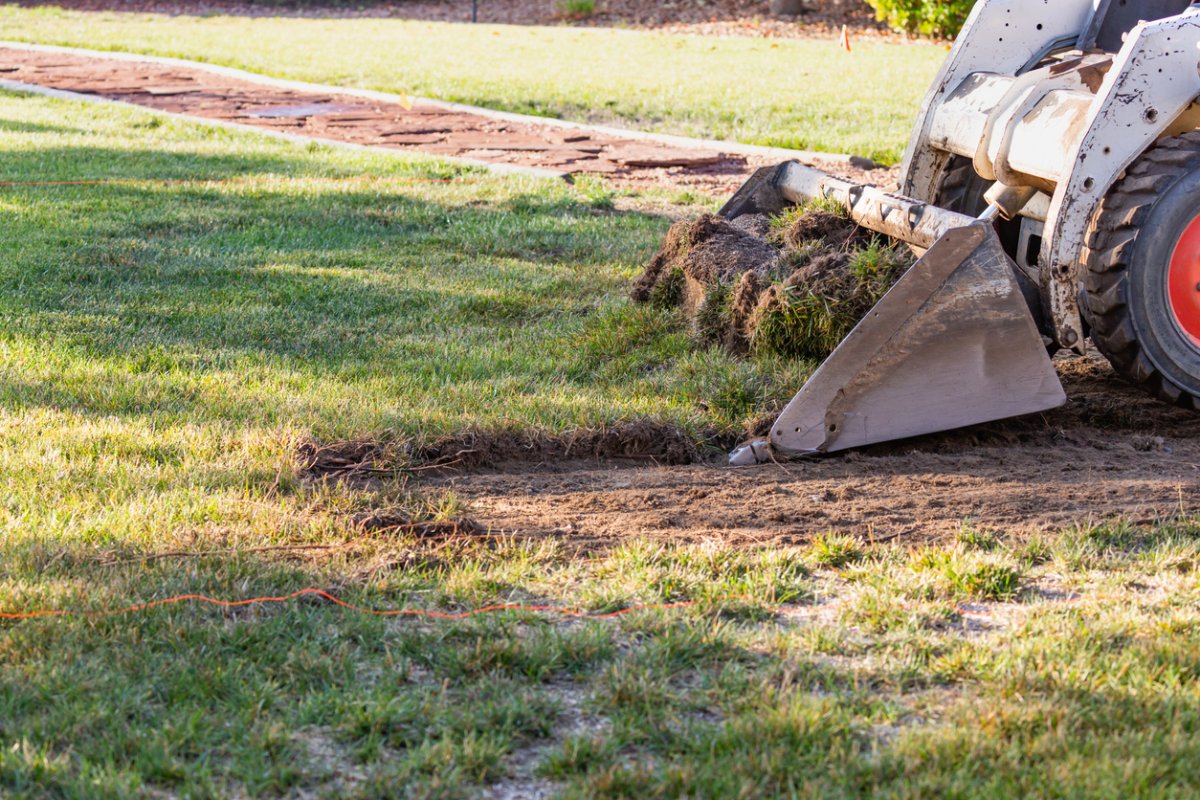We may earn revenue from the products available on this page and participate in affiliate programs. Learn More ›
Despite an unusually wet winter, the southwestern United States is still facing a water crisis. Consecutive years of increasing temperatures and lack of precipitation have led to historic drought conditions, particularly in my home state of California, and local governments are stepping up to take action.
With the help of rebate programs, many homeowners now have the opportunity to offset the cost of one project that can make a big difference in terms of water conservation: Removing the lawn.
According to the Metropolitan Water District of Southern California, replacing a 1,500 square foot traditional turfgrass lawn with alternatives that are better suited to the environment can reduce a single household’s water use by 51,000 gallons a year.
Recently, I applied for a grass-removal rebate and transformed my lawn into a sustainable xeriscape, and I’m glad I did. If you’re thinking about doing the same, here’s what you need to know.
Why I Decided to Remove My Lawn
I’ve always had a love of gardening, and thanks to my degree in Plant Sciences from the University of California, I’m all too familiar with the devastating impacts of drought on home landscapes. I also know that lawn maintenance contributes to the issues. From the depletion of water to the lack of biodiversity, lawns are a huge drain on resources and give little back to the environment.
So, I started looking into swapping out my lawn for something more environmentally friendly and was pleasantly surprised by the results.
Government Incentives
It didn’t take long to find a long list of programs that can help fund the cost of replacing turfgrass with drought-tolerant alternatives. In California, most offer up to $2,000, depending on the size of the lawn.
The incentives are usually city-specific, and I found a landscape rebate in Monterey that provided $1 per square foot of lawn removed up to 2,500 square feet. There were several rules to follow in order to qualify, but it was well worth the effort to supplement the steep cost of lawn removal and renovate my outdoor space for sustainability.

How I Transformed My Yard
When my application got approved, I started planning ways to use the funds to update my landscape. I knew I wanted to implement xeriscaping principles with rock gardens that both myself and my kids could enjoy. I also opted to do most of the work myself, which saved thousands compared to hiring it out. This helped the rebate stretch further, as I had more money to spend on the new design.
I started the lawn-removal process with solarization, which involves covering the grass with a plastic sheet to kill it off. Heat gets trapped under the sheet, rendering the ground uninhabitable for the grass below. It takes months for this to work, but it’s definitely one of the cheapest, easiest, and most environmentally friendly options for removing a lawn.
Once the grass was dead and gone, I covered most of the ground with mulch, which helps enrich the soil with nutrients and minimizes weeds. Next, I chose some native, drought-tolerant plants and locally sourced rocks to create visual interest and habitat for wildlife.
I didn’t want the yard to become too desertlike, so I made sure there were still plenty of places to garden and teach my kids about local plant life.
RELATED: 10 Tips for Creating a Woodland Garden at Home

Life With an Xeriscape
Removing my lawn was a long process, but it was totally worth it. The water conservation alone has been astounding. Research shows that xeriscaping can reduce typical household water usage by 60 percent in arid regions, and I have definitely seen some significant savings.
My landscape is also much more attractive now. Lawns are not only a massive drain on natural resources; they’re going out of style. Having an eye-catching, biodiverse yard helps boost curb appeal and adds interest to a home.
It’s also great to know that I’m making a difference in preserving water in California. It seemed so wasteful to be pumping out water just to keep the lawn green. Now, my xeriscape can withstand droughts and isn’t contributing to the water crisis.
RELATED: The 15 Best Plants for Rock Gardens

How My Neighbors Feel About It
During the lawn removal process, my neighbors were skeptical. It didn’t look great for a while. Luckily, the completed transformation earned their approval. They’ve even asked for a few tips on how to apply for a local rebate program, so they can do something similar with their outdoor spaces.
Most people don’t really consider the negative impact a traditional grass lawn can have on the environment, so it’s great to provide just one example of a way to improve it.
3 Essential Tips for Successful Lawn Removal
If you’re thinking about replacing your lawn with a drought-resistant alternative, start by doing some serious research.
Get Funding First
It can take months to get a rebate approved, so don’t do any work until you’re sure about how much government assistance you’ll get.
Once you have funding, it’s easier to create a budget for lawn removal. I decided to do most of the work myself to save money, but you might need to hire a local landscaper if that’s not possible for you.
Buy Local, Native Plants
There are tons of drought-resistant plants on the market, but it’s best to buy species that are native to your region. Native plants need minimal watering and are more likely to thrive in areas where they would grow naturally.
Think About Biodiversity
You should also think about local wildlife and how you can make your garden more biodiverse. There are plenty of drought-tolerant plants that are also beneficial for pollinators—different types of succulents, such as sedums and sempervivums, are great options—and simple structures like bug hotels can attract more wildlife to your new yard.

